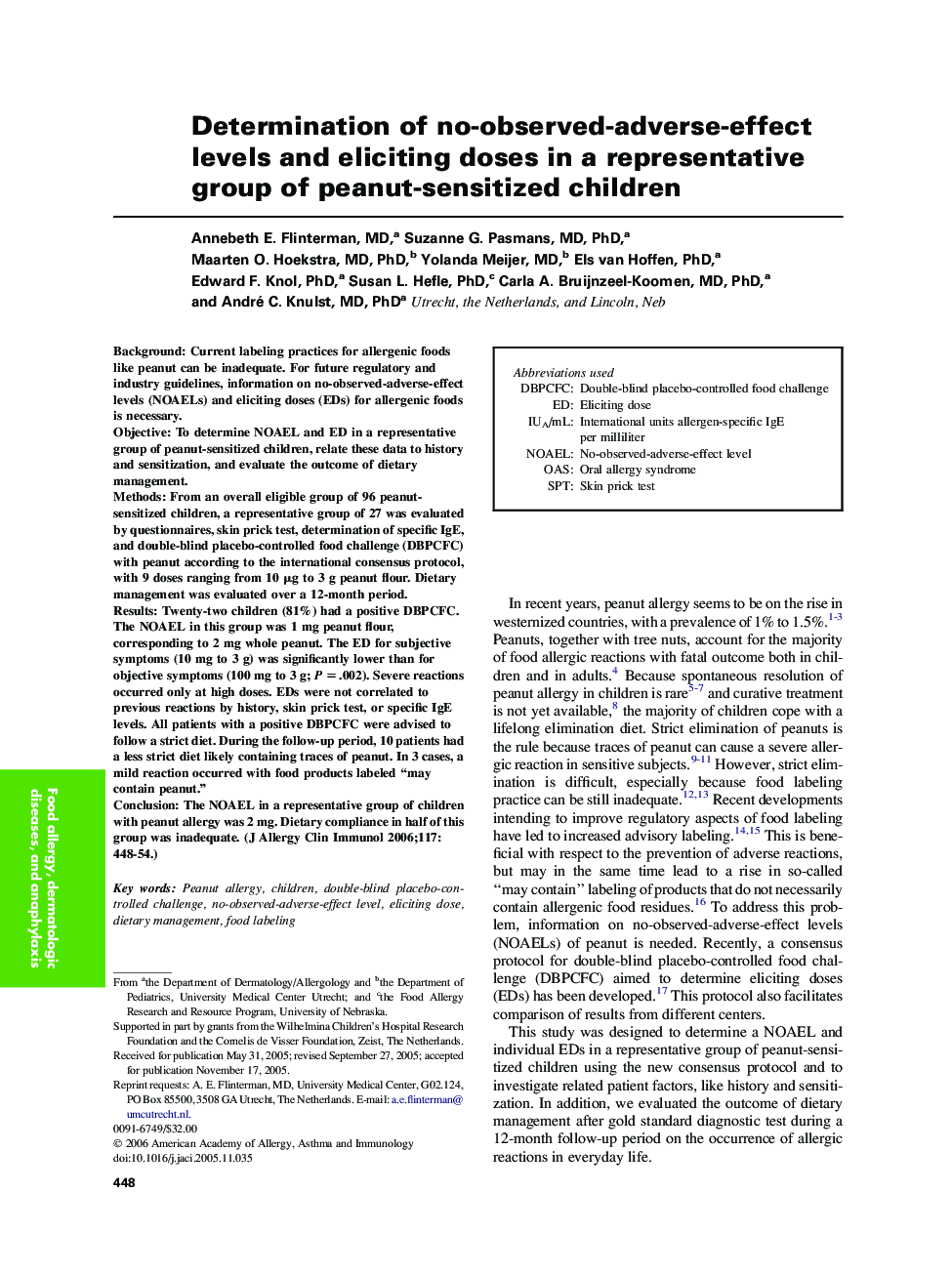| کد مقاله | کد نشریه | سال انتشار | مقاله انگلیسی | نسخه تمام متن |
|---|---|---|---|---|
| 3203276 | 1201992 | 2006 | 7 صفحه PDF | دانلود رایگان |

BackgroundCurrent labeling practices for allergenic foods like peanut can be inadequate. For future regulatory and industry guidelines, information on no-observed-adverse-effect levels (NOAELs) and eliciting doses (EDs) for allergenic foods is necessary.ObjectiveTo determine NOAEL and ED in a representative group of peanut-sensitized children, relate these data to history and sensitization, and evaluate the outcome of dietary management.MethodsFrom an overall eligible group of 96 peanut-sensitized children, a representative group of 27 was evaluated by questionnaires, skin prick test, determination of specific IgE, and double-blind placebo-controlled food challenge (DBPCFC) with peanut according to the international consensus protocol, with 9 doses ranging from 10 μg to 3 g peanut flour. Dietary management was evaluated over a 12-month period.ResultsTwenty-two children (81%) had a positive DBPCFC. The NOAEL in this group was 1 mg peanut flour, corresponding to 2 mg whole peanut. The ED for subjective symptoms (10 mg to 3 g) was significantly lower than for objective symptoms (100 mg to 3 g; P = .002). Severe reactions occurred only at high doses. EDs were not correlated to previous reactions by history, skin prick test, or specific IgE levels. All patients with a positive DBPCFC were advised to follow a strict diet. During the follow-up period, 10 patients had a less strict diet likely containing traces of peanut. In 3 cases, a mild reaction occurred with food products labeled “may contain peanut.”ConclusionThe NOAEL in a representative group of children with peanut allergy was 2 mg. Dietary compliance in half of this group was inadequate.
Journal: Journal of Allergy and Clinical Immunology - Volume 117, Issue 2, February 2006, Pages 448–454